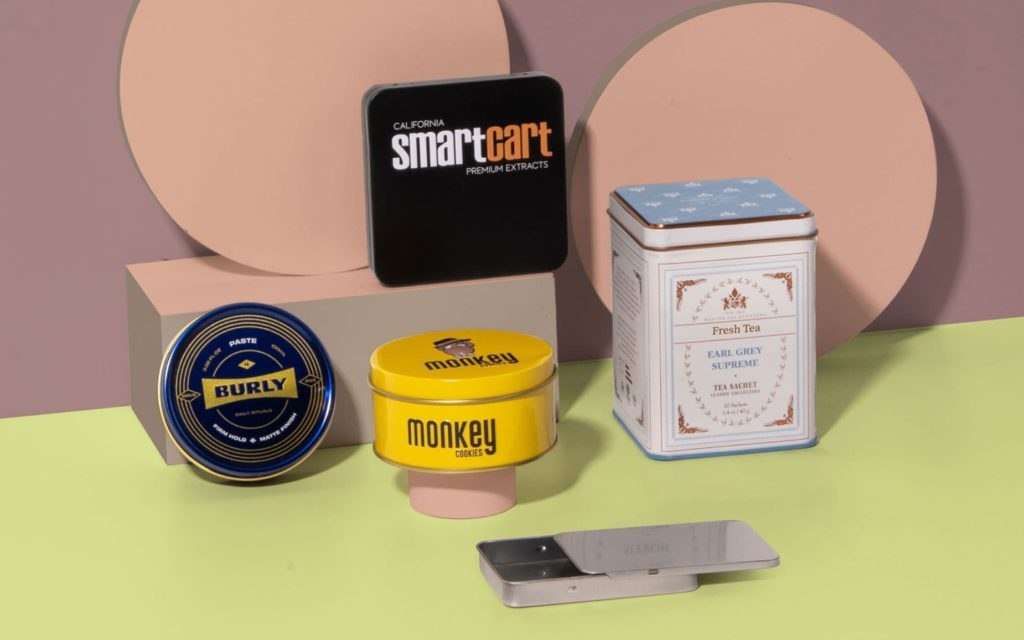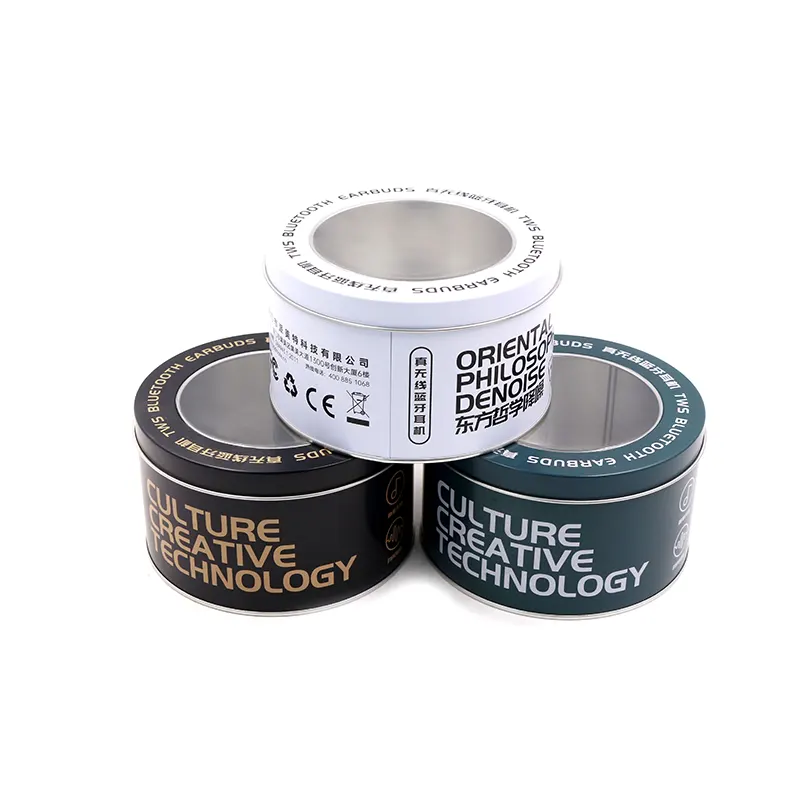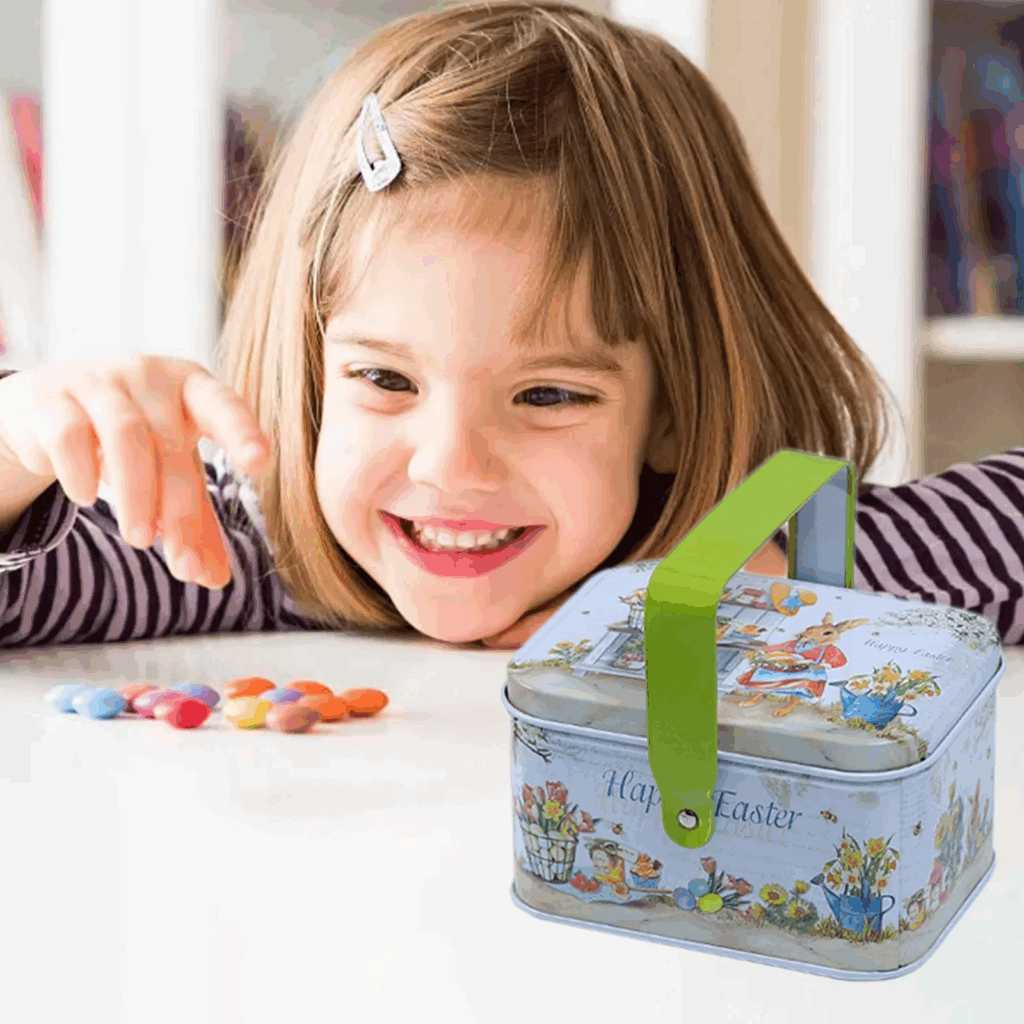Whether it’s the charming cookie tin from your childhood or the elegant tea box you’ve kept for years, tin packaging has a way of making everyday items feel just a bit more special. But behind these attractive containers lies a fascinating world of materials and manufacturing. In diesem Leitfaden, we’ll unpack the differences between tin, Weißblech, and tin-free steel, explore the pros and cons of each, and explain why so many brands are turning to tinplate packaging for their products.
Let’s open the lid and dive in!
What Is Tin?

A Soft Metal with Big Impact
- Pure tin is rarely used in packaging because it’s too soft and expensive. Jedoch, it plays a key role as a protective coating on other metals like steel.
- Tin is known for its resistance to corrosion and non-toxic properties, which makes it suitable for food-safe applications.
- Historically, tin was used for containers, but modern uses rely more on tinplate for cost and strength benefits.
Tin’s Role in Modern Packaging
- Tin is used to coat thin steel sheets, creating tinplate—the core material for most tin packaging today.
- It helps Verrostung verhindern, ensuring products inside (Besonders Essen) remain safe and fresh.
- It also adds a visually shiny and smooth surface, ideal for high-end printing and decoration.
What Is Tinplate?
Composition and Structure
- Tinplate is a low-carbon steel sheet that has been coated with a thin layer of tin on both sides.
- This structure combines the strength of steel with the corrosion resistance of tin, making it ideal for packaging applications.
- The thickness of tinplate can vary depending on the intended use, ranging typically from 0.14mm to 0.35mm.
How Tinplate Is Made
- Steel sheets are cleaned and prepped, then dipped or electroplated with molten tin.
- This tin layer is microscopically thin, yet strong enough to protect the steel from moisture and chemicals.
- After coating, the tinplate is tempered, cut, and formed into various packaging shapes—often by specialized tin box suppliers.
Common Uses of Tinplate Packaging
- Popular in the food and beverage industry for packaging items like cookie tins, Pralinen, und Tee.
- Also used in cosmetics, medical supplies, Werbeartikel, and decorative containers.
- Chosen for its premium appearance, Haltbarkeit, und Recyclingfähigkeit.
Tinplate vs. Tin-Free Steel

What Is Tin-Free Steel?
- Tin-free steel (TFS), also known as electrolytic chromium coated steel, does not contain a tin layer.
- Instead, it’s coated with chromium or chromium oxide, offering a different level of corrosion protection.
- While more affordable, TFS is typically used for non-food packaging or where internal linings are added.
Key Differences in Performance
- Korrosionsbeständigkeit
Tinplate performs better for long-term storage and food safety. TFS is more vulnerable to corrosion unless protected.
- Printability and Finish
Tinplate provides a glossy, attractive finish that is ideal for printing and embossing. TFS usually has a matte surface that’s less vibrant.
- Cost Consideration
TFS is cheaper and suitable for short-term or dry packaging, but tinplate remains the preferred choice for premium, food-grade containers.
Which One to Choose?
- Choose tinplate for premium food packaging, gifting, or high-quality presentation.
- Choose tin-free steel when cost is a major factor, and the packaging will not be exposed to moisture or food contact.
Pros and Cons of Tinplate Packaging
Advantages of Tinplate
- Excellent Protection
The tin coating acts as a barrier against oxygen, Feuchtigkeit, und Licht, preserving product quality—especially important for perishable items.
- Highly Printable Surface
Tinplate offers a smooth surface that allows for sharp printing, vibrant colors, and sophisticated branding—ideal for promotional packaging.
- Eco-Friendly and Recyclable
Tinplate is 100% recyclable without losing quality. Consumers also reuse tins, especially for gifting or storage.
Limitations of Tinplate
- Higher Cost Compared to Alternatives
Tinplate is more expensive than materials like plastic or paperboard, but its long-term value and branding impact often justify the cost.
- Dents and Deformation
While durable, tinplate containers can still dent under impact. Proper packaging and handling during transit are necessary.
- Not Flexible
Tinplate is rigid and not suitable for squeeze or collapsible packaging, which limits its use to fixed-shape containers.
Choosing the Right Tin Box Supplier

What to Look For
- Experience and Design Capability
Choose a supplier who can support custom tooling, advanced printing, and creative packaging solutions.
- Material Quality and Control
Confirm that the supplier uses standardized tinplate thickness and food-grade coatings if needed.
- Produktionskapazität
For cookie tins bulk, ensure your supplier can handle your volumes with consistency.
Questions to Ask
- Can they provide certification for food contact safety?
- Do they support small-batch prototyping before full production?
- What are their minimum order quantities (MOQs)?
Abschluss
Tinplate packaging is more than just a pretty face—it’s a functional, sustainable, and highly customizable solution that supports branding, protects products, and delights consumers. From understanding the difference between tinplate and tin-free steel to selecting the right thickness of tinplate, every detail can influence your packaging’s performance and appeal.
So whether you’re preparing for a cookie tins bulk launch or searching for a long-term tin box supplier, making informed material choices will set your brand apart—on the shelf and beyond.







